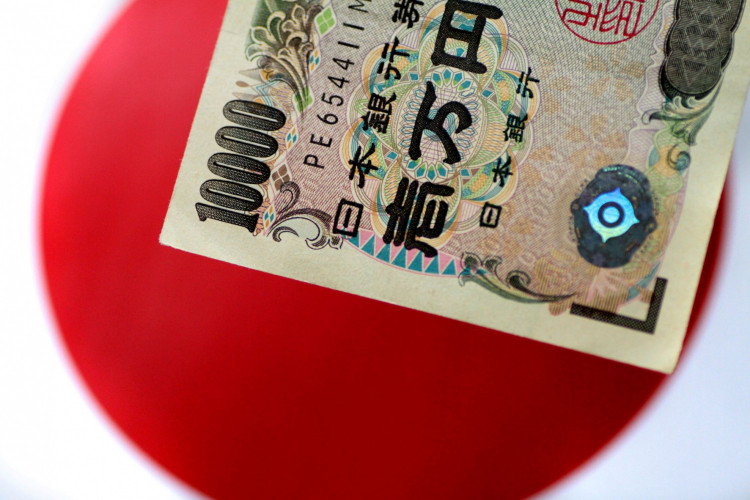The Bank of Japan (BoJ) continues its struggle to balance low interest rates and the yen, but the situation is becoming increasingly dire.
On Thursday, the "U.S. bond storm" hit the Japanese market, resulting in a triple hit on Japanese stocks, bonds, and currency. By Friday, Japanese government bond yields continued to rise, with the 10-year yield briefly touching 0.77%, its highest since 2013.
In an effort to suppress bond yields, the BoJ announced an unplanned bond purchase operation on Friday, planning to buy 300 billion yen worth of 5-10 year Japanese government bonds. Analysts suggest that the BoJ still hopes to manage expectations to some extent, aiming to prevent yields from rapidly reaching the 1.00% mark. Earlier in July, the BoJ allowed yields to hover above 0.50%.
Following the news, the 10-year Japanese bond yield slightly decreased, and the yen briefly dipped more than 10 points against the dollar, reaching a low of 149.52. However, it quickly rebounded to 148.73, leading to speculation that the BoJ might soon end its negative interest rate policy.
Markets Watch the Bank of Japan Closely In the third quarter of this year, Japanese government bonds fell by 3%, marking the largest decline since 1998.
During this period, the BoJ purchased government bonds worth 25.5 trillion yen, a 42% decrease from the first quarter's purchases.
According to Bloomberg, global government bonds outside of Japan fell by 4.6% during the same period, marking the largest decline in a year. This was due to ongoing inflationary pressures intensifying expectations that interest rates would remain high for a longer duration.
More and more people are speculating that the BoJ will end its negative interest rate policy early next year, even though the BoJ has repeatedly stated the need to maintain stimulus measures to support the still unstable economic recovery.
Traders say the BoJ's current influence on the market is reminiscent of Japan's Ministry of Finance in 1998.
In 1998, the Ministry of Finance announced it would stop directly purchasing long-term government bonds on behalf of postal savings and public pension funds. This was because it needed to retain cash to pay for tax cuts and stimulus measures. The ministry also indicated plans to sell a record number of bonds in the next fiscal year.
Expectations of a large influx of new bonds into the market caused the 10-year Japanese government bond yield to surge 180 basis points in five months from its September 1998 low. In the last quarter of 1998, Japanese government bonds plummeted by 6.2%, marking the largest decline since 1987.
Tightening Might Come Sooner: BoJ's Former Research Chief Predicts 10-Year Bond Yield Nearing 2%
Many analysts believe that as the yen approaches the psychological threshold of 150 yen to the dollar, and exerts upward pressure on import prices, actual tightening might come sooner than expected.
Last week, Bob Michele, Global Head of Fixed Income at JPMorgan, told CNBC that if the yen falls to more than 150 yen per dollar, the BoJ might be forced to raise interest rates sooner.
Morgan Stanley MUFG Securities also recently predicted that the BoJ will end its negative interest rate policy and yield curve control program in January of next year.
Toshitaka Sekine, former research chief at the BoJ and current professor at Hitotsubashi University, said that if the central bank achieves its inflation target and ends its negative interest rate policy, investors should be prepared for the 10-year Japanese bond yield to approach 2%. He expressed surprise at Japan's core CPI rising 2.7% in August and regular workers' fixed wages growing 2.4% in July, stating he rarely sees such figures.
Storm Looms if BoJ Tightens Policy
Michele from JPMorgan stated that for decades, Japan has been the mother of carry trades, with vast amounts of money being borrowed in Japan at extremely low costs and then flowing to foreign markets.
As Japanese government bond yields rise to their highest levels in a decade, Japanese investors have begun to liquidate positions in various asset classes in overseas markets.
Market analysts believe that if the BoJ ultimately decides to start tightening its policy, it will trigger global market turbulence. This will drive funds from foreign assets like U.S. bonds back to Japan, accelerating the global sell-off of non-Japanese assets. Traditional safe-haven assets like the yen and gold will once again be sought after by the market. This could potentially increase global systemic financial risks.






